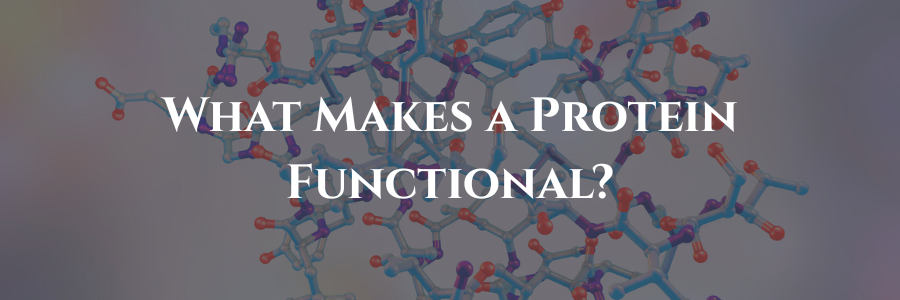Proteins are not just strings of amino acids they are complex, highly structured, dynamic molecule that must fold correctly to function properly. But what exactly determines whether a protein is functional?
Here are some factors that determine proteins functionality:
Primary Structure
- The specific order of amino acids in a polypeptide chain is fundamental. This sequence impacts how the protein will fold.
- Even a single amino acid change can drastically alter the protein’s shape and function causing genetic disorders and diseases.
Protein Folding
- A protein’s function is directly tied to its 3D shape:
- Secondary structure – Localized folding patterns like alpha-helices and beta-sheets.
- Tertiary structure – The overall 3D shape of a single polypeptide chain.
- Quaternary structure – The arrangement of multiple polypeptide chains in multi-subunit proteins.
- Proteins must fold correctly, as misfolding can cause loss of function or aggregation, leading to diseases like Alzheimer’s.
Post-Translational Modifications (PTMs)
- After a protein is synthesized, it undergoes some modifications known as Post-Translational Modifications including addition of glycan species or chemical groups.
- Glycosylation – Influences interactions.
- Phosphorylation – Affects activity and signaling.
- Others modification as methylation, acetylation etc.
- All PTMs affect proteins function, stability and interactions.
Molecular Interactions
- Protein function is affected by its interaction with other molecules such as ligands, substrates, even other proteins.
- Protein’s specific binding sites allow it to selectively interact with these molecules.
- These interactions affect proteins’ functions thereby controlling various physiological processes .
Environmental factors
- Proteins are highly sensitive to their environment:
- Temperature – Too much heat can cause denaturation.
- PH Levels – Changes can alter charge distribution and folding.
- Storage Conditions as they affect proteins degradation or aggregation over time.
If a protein degrades, aggregates, or unfolds, it loses its function.
Genetic Mutations & Degradation
A small genetic mutation can alter protein structure and function. Some mutations enhance activity, while others lead to diseases.
Proteins also have a lifespan—they are constantly being synthesized and degraded. If degradation pathways malfunction, it can lead to cancer, neurodegeneration, or metabolic disorders.
Why Protein Characterization Matters?
Due to factors enlisted earlier, We need protein characterization to test:
- Purity – Is it free from contaminants?
- Folding & Stability – Is it structurally intact?
- Activity & Kinetics – Is it performing its function efficiently?
Without proper characterization, we might assume a protein is functional when it’s not leading to ineffective drugs, or unsafe products.
Read also:
- Novel Polymers in Drug Delivery
- Critical Processing Parameters in the Fabrication of PLGA Microparticles
- Glass Transition Temperature and Drug Release from PLGA-Based Microspheres
Resource Person: Abanoub Efraim

